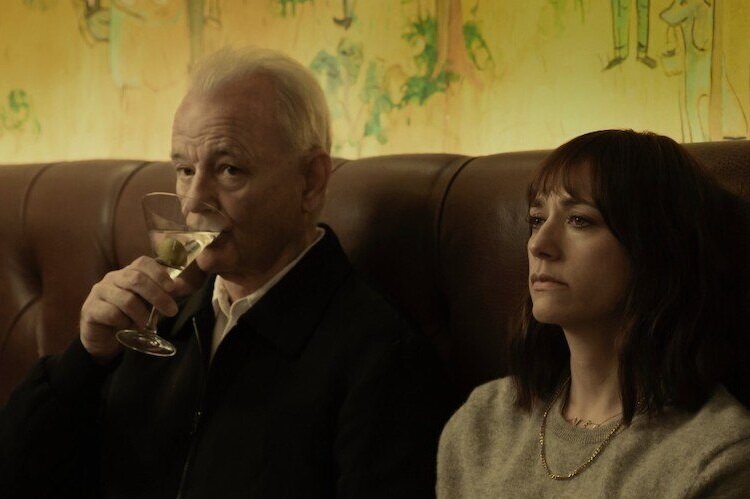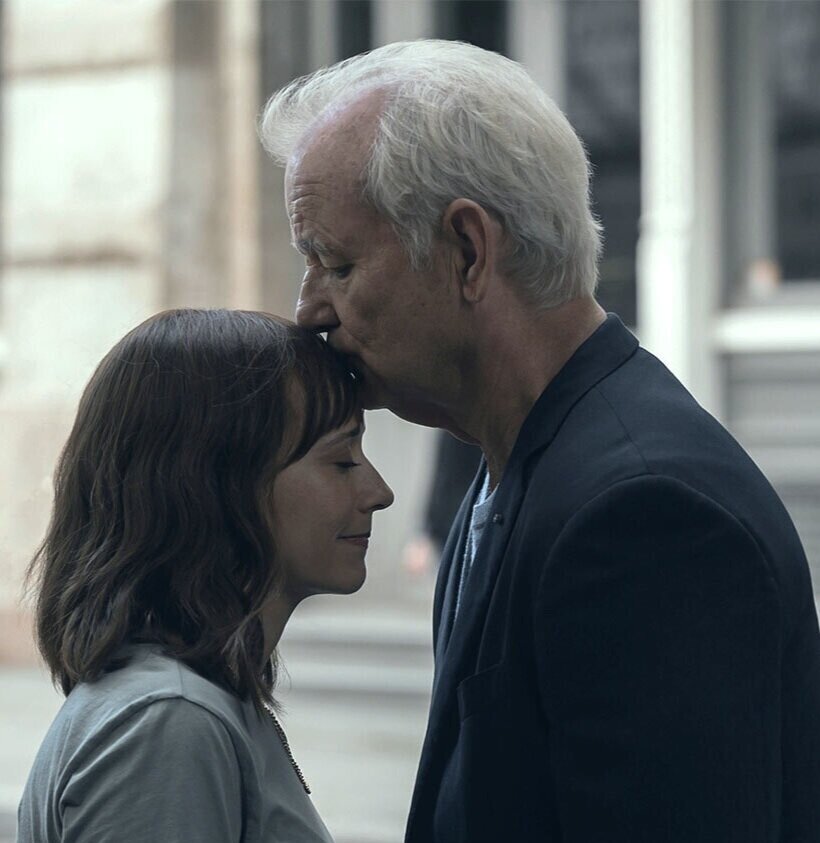‘On the Rocks’ Review: A Misfired Comedy Which Averts Disaster, Thanks To Bill Murray
WHILE ‘ON THE ROCKS’ LACKS FOCUS AND PURPOSE IN ITS MOMENTS WITHOUT HIM, BILL MURRAY ONCE AGAIN CAPTIVATES UNDER SOFIA COPPOLA’S DIRECTION.
Bringing Bill Murray and Sofia Coppola back together for the first time in 17 years - not counting 2015’s oddball special “A Very Murray Christmas” - should be a scientific formula for cinematic gold. Cue A24’s “On the Rocks”, released today for streaming on Apple TV+ after a month of enthusiastic buzz following its premiere at the New York Film Festival in September. “On the Rocks” centers itself around Laura (Rashida Jones) and her father Felix (Murray) as they suspect Laura’s husband Dean (Marlon Wayans) is having an affair. There’s a pretty solid throughline between “On the Rocks” and some of Coppola’s other films - to little surprise, the film that is most echoed here is her other big screen collaboration with Murray, the masterful “Lost in Translation” - in its exploration of marital insecurity as well as the monotony of family life, but here, for the first time, Coppola has crafted something that feels almost empty in a way.
It’s difficult to identify precisely why “On the Rocks” falters, because it isn’t so much that the movie does anything overly wrong… it’s more that it tries to do too many things well, and instead lands with most of them somewhere in the realm of “competent”. Generally speaking, “competent” is exactly that, but for a Sofia Coppola film, it’s a little disappointing.
In an overall way, the first thing that stands out in regards to why “On the Rocks” doesn’t stand out, is its visual style. Coppola has always been a director who manages to fascinate with the visual language of her movies. For example, the opening shot of “Lost in Translation” is all but burned into the brains of every person who has seen it. Or, take the suicide pact sequence from which “The Virgin Suicides” derives its name, with its heavy usage of darkness and silhouette to shroud the deaths in mystery even while the voiceover explains exactly how each one occurred. “Marie Antoinette” is practically two straight hours of visual delight, inviting its audience directly into pre-Revolution France. There’s very little akin to that in “On the Shelf”. The opening sequence at Laura and Dean’s marriage manages to tease a lot of Coppola’s visual and cinematic style, and it’s a promise that the rest of the film largely fails to live up to.
Coppola continues to use her framing and cutting in somewhat interesting ways - an early sequence where Laura works at her desk serves as an example of this - but there’s also a bland, almost pedestrian quality to the filmmaking as well. The most complimentary one can be at times is that the film plays like a young admirer of Coppola’s attempting to emulate her. This remains the case for the first 20 minutes of the film, until right about the same time that Felix shows up.
After 20 minutes of depicting a few repetitive days in Laura’s life - taking her kids to school, suffering through her writer’s block at home, wondering if her husband still loves her, being pestered every time she runs into Jenny Slate whose entire character is a pointless distraction - and long after the premise of the film seems to have been set up (Laura becomes suspicious of Dean’s fidelity immediately after the opening sequence), we’re finally treated to Bill Murray’s face. Almost immediately, he takes command of his performance and, by extension, the film. Murray exudes his typical deadpan, world-weariness-infused personality, while somehow maintaining a heavy degree of charm. It’s such a quintessential Murray performance, yet simultaneously manages to fit within the world of this film and, most importantly, manages to completely convince you that you’re watching a real father and daughter interact. It’s also here where Coppola’s direction begins to make some kind of impression.
It’s in these scenes - which constitute roughly half of the runtime - where the potential of this film is realized, however it also calls attention to the remaining half, which falls short. There’s a terrific, “My Dinner With Andre” or “Before Sunrise” type of quality to the night-on-the-town, “let’s just talk about life” dynamic in these scenes. These two people are semi-estranged, and Laura has her share of grievances with how Felix has lived his life, but the love between their characters is palpable, as is the chemistry between Murray and Jones. The one major thing lacking from these sequences is a sense of character for New York City, something that Coppola was far more capable of capturing in Tokyo back in 2003.
However, the other half of the film - Laura’s relationship with Dean, and her efforts to catch him in what she believes to be an affair - doesn’t engage with the audience on anywhere near the same level as the relationship between Laura and her father does. The main problem is that the film simply does not have enough time to develop this relationship in a way that allows you to be attached to it. Wayans is actually very effective here as a semi-detached father and husband whose work constantly drags him away, but he has so little screentime that the audience doesn’t receive the proper opportunity to invest in his character, let alone his marriage.
The one truly great comedic sequence where the two halves of the film overlap is when Felix arrives to “tail” Dean in a red, noisy, completely conspicuous roadster. However, this leads into a sequence where Felix’s erratic driving causes them to be pulled over by the police. There’s something of a commentary here about how Felix uses his privilege as an older, wealthier white man to talk his way out of the situation entirely, but it’s practically shoehorned into a film that otherwise makes no tacit acknowledgement of race, even though the film itself is about an interracial marriage. Coppola seems to indicate that the marriage would have been shown exactly the same way on screen if Dean were played by a white actor, which begs the question as to why she suddenly focuses on white privilege in this scene. These are important conversations to have in cinema, but it comes across as very anvilicious here, and ultimately creates an even bigger question: what is this movie supposed to be about?
The marketing around “On the Rocks” seems to imply that it’s primarily about a father and his daughter, but then there’s a whole series of scenes revolving around Laura’s motherhood, and how she’s having trouble writing, and how she thinks her husband is cheating on her, all of which don’t really go anywhere. Each of these smaller arcs feel disjointed and incomplete, almost as if they’re leeching pages of the screenplay away from the storyline Coppola should have put more focus on.
Again, it’s not that any of these parts of the film are bad - the performances are very good, certain moments are entertaining, and it deserves to be mentioned a second time how Coppola deserves respect for portraying an interracial marriage as just another marriage - as much as they just feel… well, empty sometimes. Still, “On the Rocks” boasts one of Bill Murray’s most captivating performances since “Lost in Translation”, and when he’s on screen, this movie absolutely grabs you. It’s a testament to his work here that the film manages to stick the landing, despite its many tangents and lack of overall style threatening to alienate audiences.



